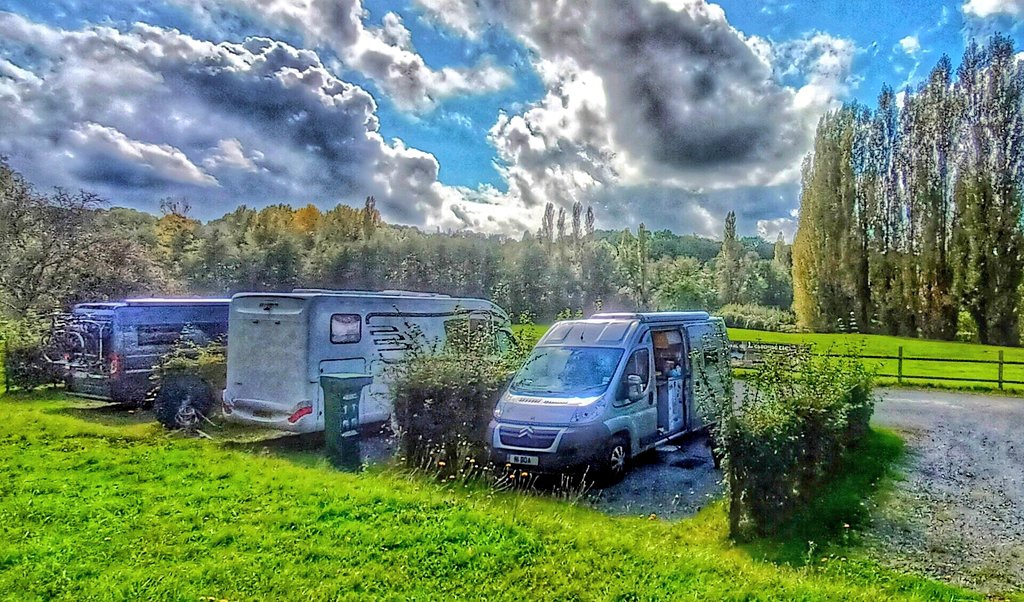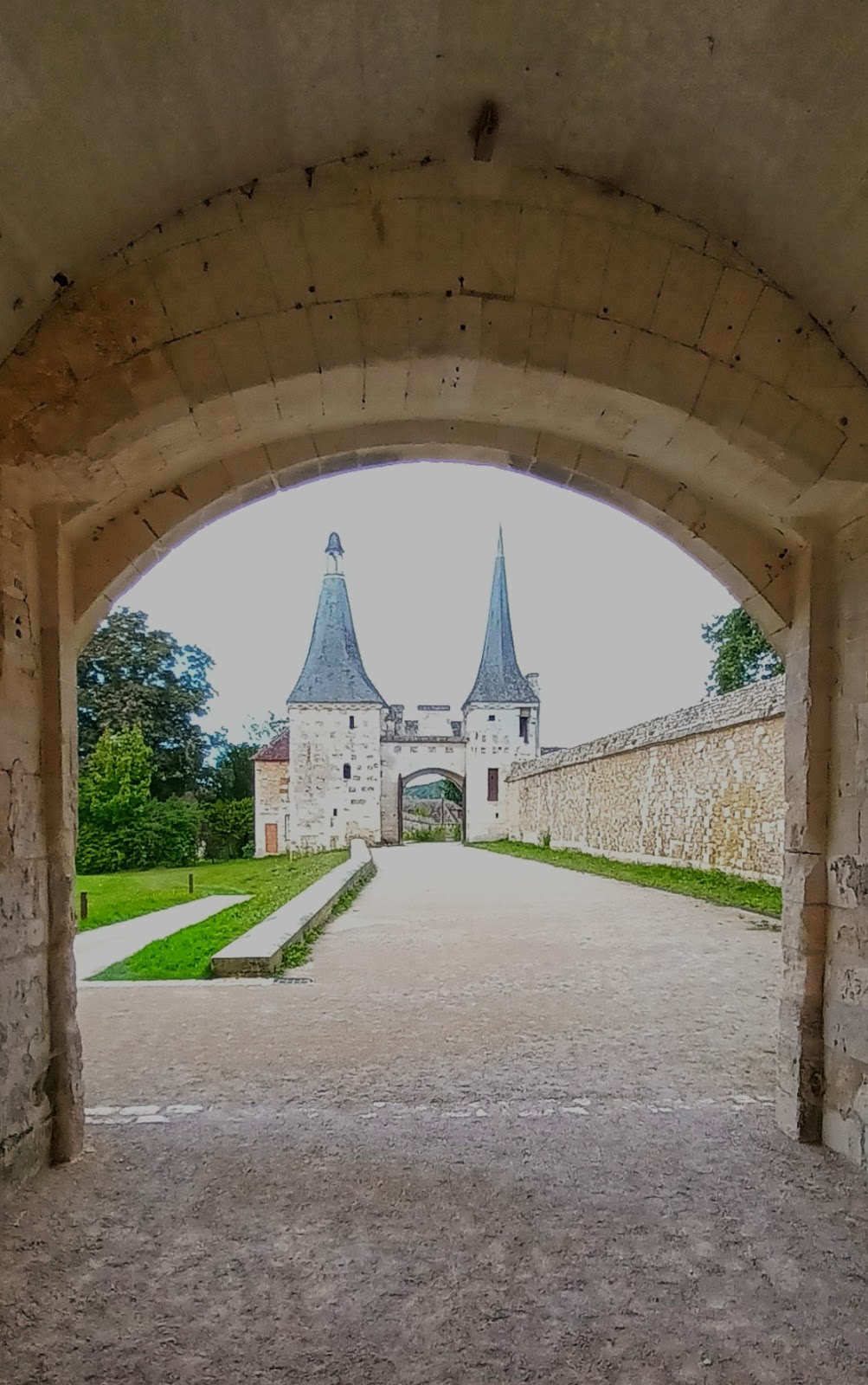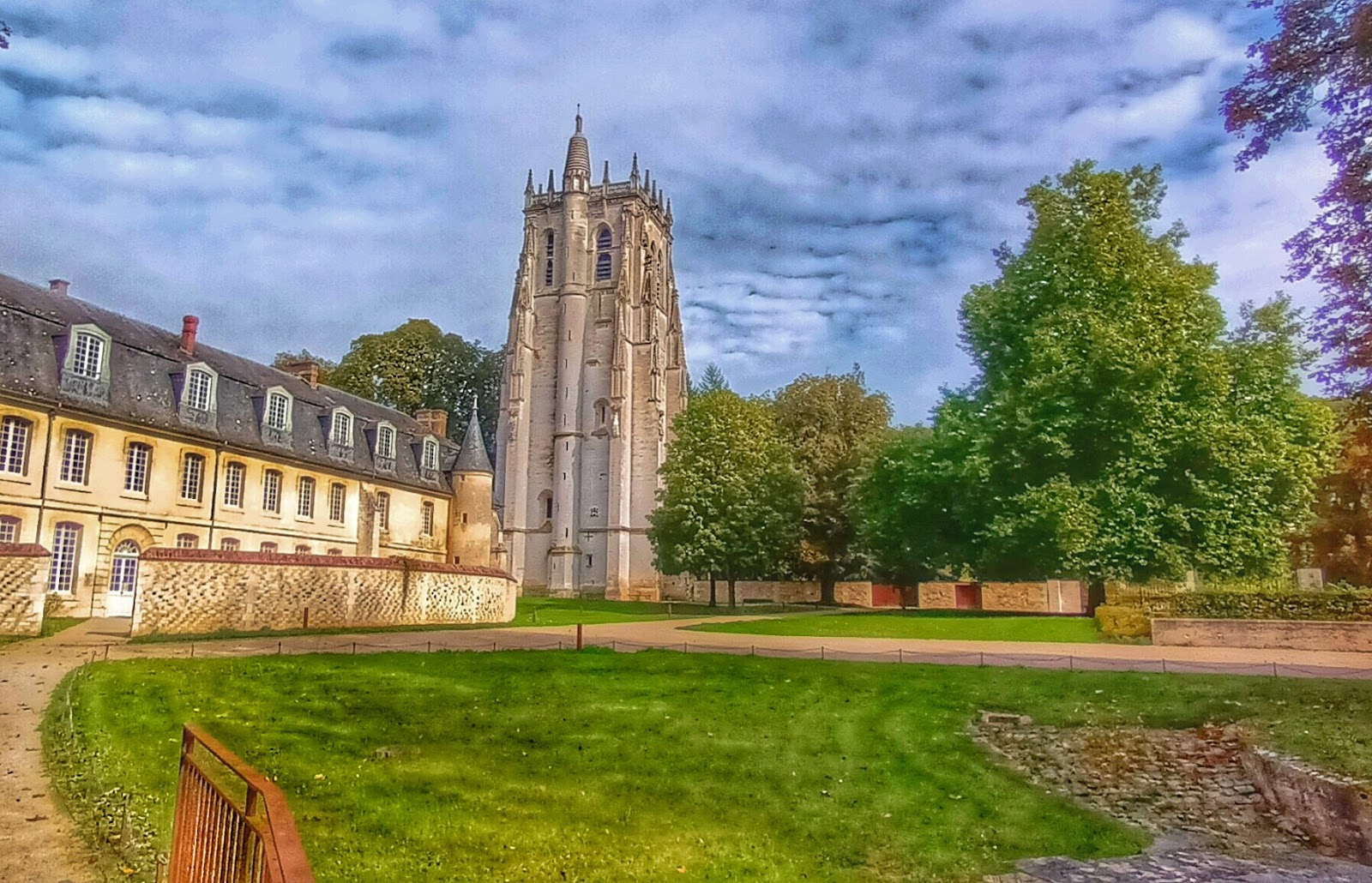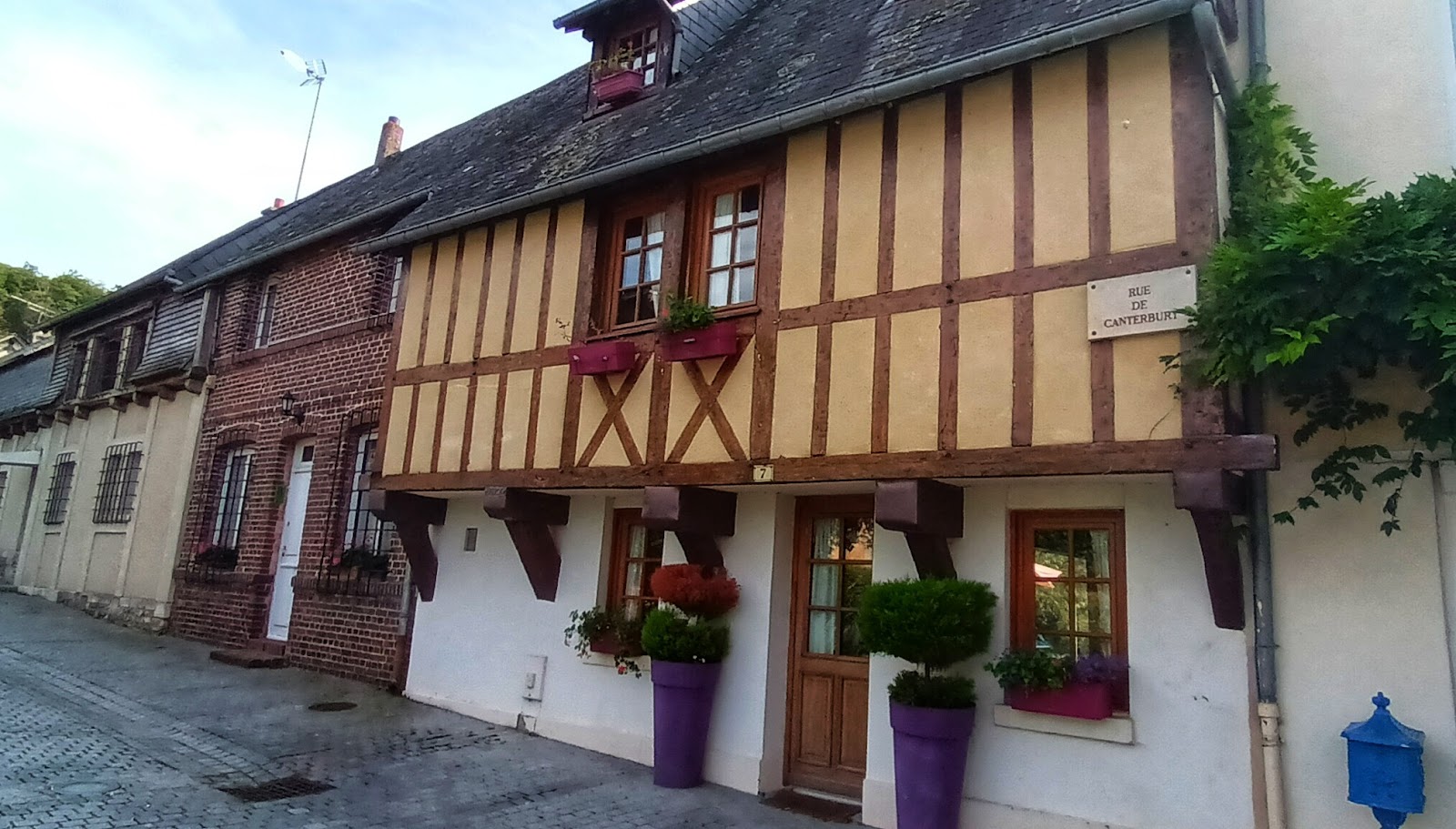Tuesday 26 September 2023
Nido's parked up overlooking the river Seine, with seagoing ships occasionally passing and creating a wake and waves that Salty can't see so doesn't like! We've stayed on this aire in the village of Mailleraye-sur-Seine before, in July 2019. It's been a hot day and it's still warm and humid this evening, although the mosquitoes drove us inside once the sun had set. Our original plan was to stay at a different aire, but more of that later.
We left Saint Rémy and drove to our next stop, in the small village of Courtonne la Meurdrac. We bagged the last of four hedge-lined pitches, although later on three vans arrived and parked along the fence line opposite, which was fine as there was still plenty of room to reverse out. Apart from the nearby church and a bar/shop on the opposite side of the road, there's not much else in the village. But there are some beautiful Norman houses and outbuildings and we enjoyed having a good nosy as we took a walk along quiet lanes with a 'mohican' of grass in the middle of the tarmac.
Our original stopover for tonight was to be in a motorhome parking area (not really an aire) on the edge of Le Bec Hellouin, a village of ancient houses and a huge abbey - Abbaye Notre-Dame du Bec.
The Abbaye Notre-Dame du Bec was founded around 1034 by a man called Hellouin, or Herluin, who had previously served as a knight under the Norman Count of Brionne before converting to the monastic life. The abbey quickly rose to become a major Christian centre thanks to two exceptionally powerful religious men. Lanfranc of Pavia, encouraging a great building programme, and Anselm of Aosta, fostering Christian thought, would make this little corner of Normandy famous, spreading the deep spirituality developed at Le Bec much further afield, notably across the Channel to England. These two abbots, having first served at this spot beside the gentle Risle River, would both in fact go on to serve as Archbishops of Canterbury, no less. Back at Le Bec-Hellouin, the abbey’s monks encouraged the growth of the adjoining village, to have workers based close by.
All here turned towards the abbey, living according to its ups and downs, from moments of great joy to times of despair. During the second half of the Hundred Years War, 1417 proved a particularly dark year; the abbot of the time, fearing a devastating attack by marauding English troops, employed a scorched-earth policy that caused the village’s destruction but did not stop the English enemy taking control of the abbey. At the Revolution, the monastic buildings were turned into a cavalry barracks. Monks only returned in 1948, followed, the next year, by some nuns, who had a separate convent built. Le Bec-Hellouin stands out not just for its religious heritage but also for its lovely setting, its peaceful, well-flowered streets and its half-timbered houses.
We parked up and had some lunch, before walking into the village. The abbey is only open to the public on certain days and I think it's only with a guide. There are still monks living in the monastery buildings and nuns in a separate convent; all contained behind high fences and gates with electronic locks. It was free to walk around the abbey gardens and a small covered cloister with pews was open too, but we didn't feel comfortable going in there. It's a lovely village, easy and peaceful to walk around, but it did feel a little like a film set. We're out of season so it wasn't busy and it felt a little uncomfortable walking around; we felt we were being watched all the time. I'm sure we weren't but with the monks and nuns locked away, occasionally glimpsed through the fencing and the strange feeling we had about the place, we both decided we didn't want to stay overnight in the car park.
So we ended up here, next to the river Seine. Ships and seagoing barges pass now and again, which makes for interest. The village is also nice to walk around; it has a much more welcoming feel than Le Bec Hellouin. Unfortunately the motorhome service point is out of action, so I've had to do a bit of replanning to find somewhere tomorrow to service the van; looks like we're popping into Yvetot first thing. We sat outside in the sunshine, although today I'm feeling tired so had a nap on the bed with Salty. I think the constant travelling and having to find somewhere to stay each night (even though this is really easy in France) is taking its toll. I've no idea how those who full-time in their vans - especially those who only wild camp - do it day after day - it's exhausting! As we approach the last few days of this trip I'm starting to look forward to returning home.


















No comments:
Post a Comment
Note: only a member of this blog may post a comment.